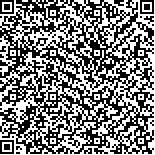| 摘要: |
| 为解决景观照明设计中用户感性意
象难以量化的问题,以其中的色光作为研究对
象,提出基于语义差分法与熵权理论的评价实
验方法,分析了用户感性意象语义化、计算机辅
助典型照明设计模型建立及评价结果量化分
析的过程。以园林景观照明设计为实验,构建了
“亭、廊、桥”三类典型计算机辅助照明设计模
型,基于VR虚拟现实技术用12个用户感性意象
评价度进行了20名用户的设计评价实验,能够
对色光设定与用户间的互动形成较准确、客观
的的评价分析结果。最终,提供了以用户感性意
象分析为研究视角,经过收集、分析和归纳形
成的典型语义词汇可对景观照明设计的评价起
指导性作用,也将能够为设计修正的参考;对
评价的数据运用熵权理论进行了分析,为较大
尺度的景观照明设计评价与分析提供了具有较
好的操作性方法,为更广泛的、面向景观照明
设计的用户感性意象量化分析提供参考。 |
| 关键词: 景观照明 色光 用户感性意象 量
化分析 熵权理论 |
| DOI:10.13791/j.cnki.hsfwest.20210116 |
| 分类号: |
| 基金项目:国家自然科学基金资助项目(51578367) |
|
| Quantitative Analysis of User Perceptual Image of Chromatic-Light in Landscape LightingDesign |
|
CHANG Yu,ZHANG Mingyu
|
| Abstract: |
| Landscape lighting has gradually become an important means to build a livable
night environment, improve residents’ happiness, enrich night activities and promote tourism.
However, there are few researches on user perceptual image analysis, and lack of simulation
technology in the specific empirical research process, so it is difficult to effectively carry out
the large-scale landscape lighting design evaluation and analysis. It is economical and feasible to
apply virtual technology to the visual simulation of optical environment. To some extent, it can
meet the requirements of subjective evaluation and even optical measurement. Therefore, we will
face the landscape lighting design, and further carry out the quantitative analysis and research on
the user’s perceptual image of the relevant environmental color light.
To solve the problem that user perceptual image is difficult to quantify in landscape
lighting design, an evaluation experimented method based on semantic difference method and
entropy weight theory is proposed with the chromatic-light as the research object. It analyses the
process of semanticization of user perceptual image, establishment of computer-aided typical
lighting design model and quantitative analysis of evaluation results. Specifically, in the process
of landscape lighting design, typical sample selection, expert evaluation and computer-aided
methods will be used; the semantization of user’s perceptual image will include the collection of
relevant data, the intervention of experts and so on; the simulation of the design experiment will
be based on VR technology, and the evaluation data will be based on user evaluation and entropy
weight theory.
Based on the above research and analysis, it established the landscape lighting design
experiment. Through investigation, three typical computer-aided lighting design models of
“pavilion, corridor and bridge” are constructed, and VR virtual scene production is completed.
LED light source is selected for lighting in the scene. Twenty users were selected to participate
in the experiment, and all of them were teachers and students of design major, and passed
the Shiyuan’s color blindness test, to ensure that they can normally perceive the color vision
displayed in the landscape lighting design scene in the experiment. Through screening, 12
perceptual image evaluation words were established. There are two key points in the process of
vocabulary selection. First, it mainly refine and sort out the preliminary semantic information
according to the expert opinions; second, the semantic typicalization needs to be carried out
according to the actual landscape lighting design and evaluation research needs. At the same time, it should make full use of Osgood’s semantic difference method to divide the perceptual image adjectives and antonyms in the target landscape
lighting design into groups and grades, so as to provide a good foundation for the quantitative analysis of users’ perceptual image. Users observed
from multiple perspectives in the virtual environment, each lighting scene presented for 30s, and then the subjects used the selected emotional scale
to evaluate the visual feelings displayed in the virtual lighting scene in turn within an additional 30s (1-5 points). After the experiment, the basic data
will be calculated and analyzed based on entropy weight theory, which can be used to quantify the user’s evaluation of typical landscape lighting
design scenarios under different lighting conditions, and form more accurate and objective evaluation and analysis results for the interaction between
color light setting and users. In the experiment, the evaluation results can intuitively express the evaluation weight of different lighting indicators in
each image scale and the direction of their ranking, which can provide visual basis for the design and optimization of subsequent lighting scenes and
improve the work efficiency.
Finally, it provides a research perspective of user perceptual image analysis. The typical semantic words formed through collection, analysis
and induction can guide the evaluation of landscape lighting design, and also provide reference for design modification; and the evaluation data is
analyzed by entropy weight theory, which provides a better operational method for the larger scale landscape lighting design evaluation and analysis,
and provides a reference for the more extensive quantitative analysis of user perceptual image for landscape lighting design.
It should also be noted that this experiment is a preliminary study on the quantitative analysis of user’s perceptual image of color light in
landscape lighting design. The experimental samples are based on three typical scenes of “pavilion, corridor and bridge”. However, the perceptual
image source of landscape lighting design is the comprehensive light environment, so it is necessary to continue to analyze the indicators of night
landscape construction. It can be seen that it have certain limitations in the number and type of experimental samples, and will continue to expand
and improve the research work of quantitative analysis of user perceptual image of landscape lighting design in the future to further improve the
applicability of experimental methods. |
| Key words: Landscape Lighting Color Light User Perceptual Image Quantitative Analysis Entropy Weight Theory |


